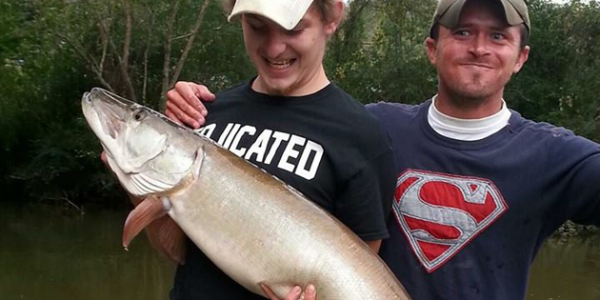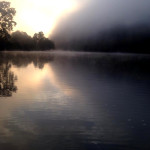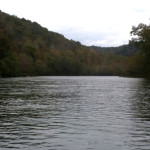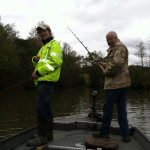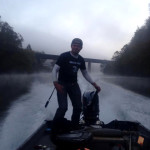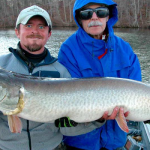By Cory Allen
The immortal words of Mel Blanc ring true in their classic Warner Bros. context, but in the art of pursuing muskies that’s about where the humor ends. Too many anglers chagrin and curse in the wind when they see their favorite waters turn to Nesquik, especially riverine systems.
Granted, in some areas, the seasonal water table roller coaster has led to the years of clockwork mud baths creating “patterns” that produce relatively consistent results, but even then, few know where to even begin past the instructions on the back of the box. Especially in waters where this may occur suddenly and without warning, precious “patterns” get thrown out baby and bath water all.
Yet, in these conditions, especially in southern systems like those in Tennessee where the line between river and reservoir is often as blurred as Mr. Magoo looking at the median on the interstate, I’ve grown to lick my chops when I know the plateaus have filled to the brim. Especially when it comes to giants, mud truly makes them dumb….. Dumber than hell.
“Dumb” though isn’t necessarily the best word. Fish, including muskies, are always stupid. Conditioning and intelligence are two entirely different things. Yet these curveballs to their status quo all too often create conditions that make them very predictable, and the compromise to their sight makes them rely that much more heavily on lateral line, which is never a bad thing.
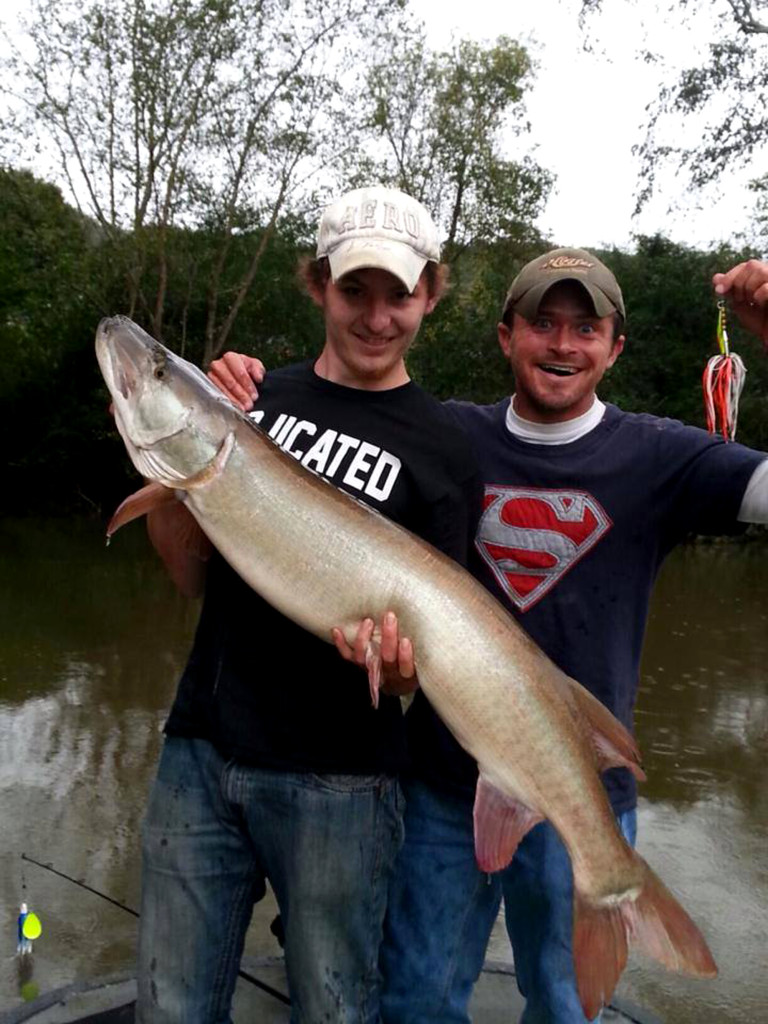
Cory Allen of Tennessee Valley Muskie Authority, with client and friend Charles Wallace, celebrating a 51″ muskie: One of the first naturally reproducing specimens to have been documented in several years.
Inclement water conditions that prompt most to turn tail and head home at the first glance from the ramp make me charge headlong like Don Quixote after a windmill dragon. Why? Because some of the largest fish ever to come aboard my Tuffy, the Baryonx, have been when I was floating in about 3 inches of visibility; so much, in fact, that I’ve grown a penchant for fishing them.
First off, never assume dark water, even nearly opaque water, compromises a muskies ability to successfully acquire targets and annihilate. If anything, after years of observation, I’m almost entirely convinced that this utterly refines their lateral line sense to a rapier fine precision tip, and they rarely miss their mark…”Well it’s so dark we can’t even see follows…” ‘Scuse me, but I didn’t think this was horseshoes or hand grenades, and follows don’t count on the tally. When you find the areas muskies hold in during these times, most likely even when they’re not active they’ll be much easier to trigger into an instinctive response with no holds barred abandon.
Just this past fall, while scouting relatively new water to our repertoire, one we were following more off scent than tracks, I found a day where the rain on the ridge line had filtered down and created current where none had previously existed. We found churning, near black water. This not being a high density area, fueled by natural reproduction, I was still utterly convinced that this was a sleeper cell for some absolute tanks.
We covered a variety of different features, in areas that would most definitely congregate muskies into very easily interpreted terms of combat. Then, like a lighthouse in the fog, there she sat, a small almost minuscule creek mouth, with no more than 3 ft of water in the mouth and quickly turning to a riffle with clear water flowing in. I had fished it several times, and to no avail most likely due to the fact that it was not very distinguished in criterion from the surrounding water conditions during normal situations. Too shallow, not enough influx to justify a musky caring or noticing. But on this day, with current whipping past and a water color line to boot, it took 3 casts for my friend Charles Wallace to hook and land a natural 51″ Tennessee muskellunge. Charles being of the endemic tribe of local musky culture told me personally the few people he knew who had fished this area had fished it for years and had never caught a musky this big. Not by a long shot. I’d almost guarantee they too, would flee from a mud fight. Yet, we saw the virtue of unnatural conditions dictating the largest muskies in that system doing something unnatural to their behavior. 51″ muskies don’t regularly sit in 3 ft creek mouths when 25-40 ft of water is readily available. But today, as in all days, this girl got priority seating, and the best seat in the house just so happened to be in one of the easiest to identify and interpret areas in the entire 6-7 mile stretch we fished.
Well if it rains, I don’t care; don’t make a difference to me. Roll black water, baby… …because when this happens, the text of the water begins to virtually illuminate off the pages. If 90 percent of the fish are in 10 percent of the water, then the 1% of the oldest baddest muskies, the apex predators, will ALWAYS occupy the single best habitats available on a daily basis. No exceptions. When this is down 15-30ft as is on most normal water conditions, it becomes a chore to present on their terms, in their domain. But when you dictate the terms by reading water that most would see as a disadvantage, you become more than just a regular fisherman. Now, you’ve become a detective, understanding how to place the criterion of a given day into the grid of greater understanding, and do combat on your own terms. In the immortal words of Frank Miller’s Dark Knight, “This isn’t a mud hole; this is an operatin’ table… and I’m the surgeon.”
The next time you’re thigh deep in mud while musky fishing, don’t worry about your impaired senses. It goes both ways. They literally throw themselves onto a slab and draw the dotted line down their chest. All you have to do is press down the scalpel and pull.
Authors Note: Notice that I didn’t say a damned thing about color selection? Exactly!
Article by Cory Allen, published in Fishing-Headquarters Online Magazine, Issue 21 – Winter 2015.


